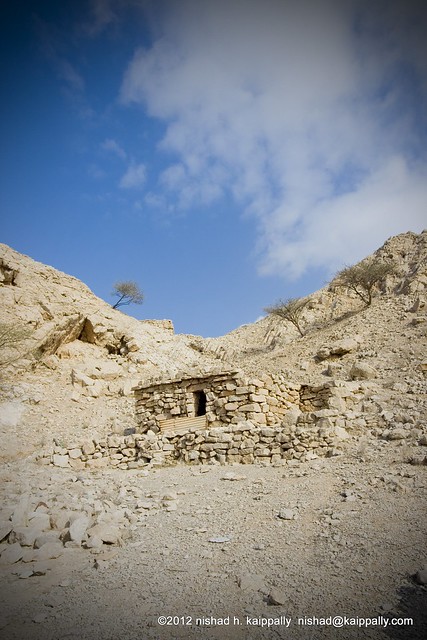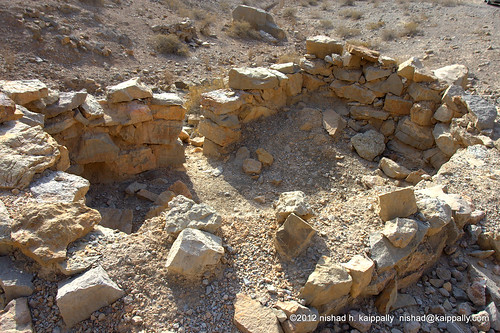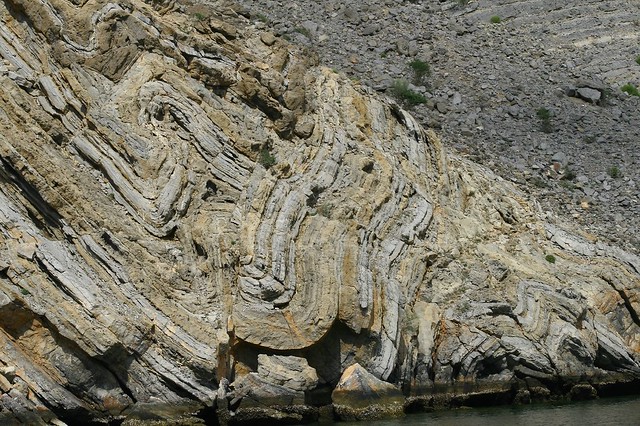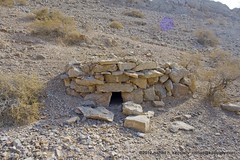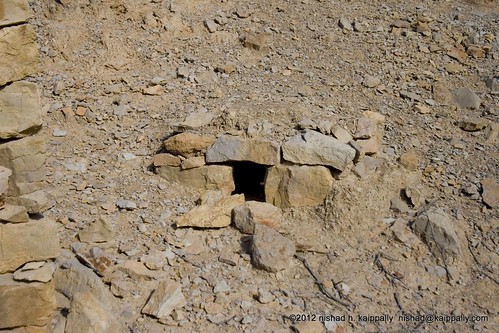Yesterday started quite unusually for me. On February 28th, I had to visit my GP. The entire week had been stressful due to the so-called "Entrance Exam" for the 7th grade for my 12-year-old son. I had to be at the school by 9 a.m. on February 29th. My body responded to all this stress by raising my blood pressure a few notches above the usual. The doctor advised me to take a break and relax. Sure, why not?
That day, February 29, 2012, would become the most eventful day of my life—and the life of a three-year-old boy named Justin.
I excused myself from the usual ritualistic Sharjah-to-Dubai bumper-to-bumper traffic and took the E611 highway to Dubai. I managed to get Suhail to his exam exactly three minutes before it started.
12:10 p.m.: Suhail's exam went well. I drove him back to Sharjah and we reached home around 1:20 p.m. We live in a first-floor apartment in a nine-story building. I was about to have lunch with my son when the lady next door rang the doorbell and timidly asked if I had heard any strange noises or screaming from my bedroom toilet. I quickly went to the toilet and opened the small window that leads to the air vent. A gust of smoke entered the room, and I heard a faint scream. My heart froze. I immediately knew that someone above us was in distress, but it was impossible to determine which floor. We rushed downstairs to the lobby and informed the watchman. I asked Suhail to stay on the ground floor while I took the elevator to the ninth floor and then descended the emergency stairs, checking each floor for signs of smoke.
The fire had broken out in a sixth-floor apartment, which has the same layout as our apartment on the first floor—a critical piece of information that would be helpful later on.
Smoke was billowing out through the door into the corridor, reducing visibility to about a foot in front. By then, a few more men had arrived and managed to break open the door, which was bent out of shape from the intense heat.
I knew the location of the CO2 cylinder near the emergency exit and, more importantly, I knew how to identify and use it. (Thanks to those day-long Civil Defense awareness campaigns held at Abu Dhabi Indian School back in 1988.) Some men had dragged an elderly woman out into the corridor. She was half-conscious and covered in soot, but she was alive. Someone was uncoiling the fire hose and turning on the water line. I instructed him to stop, as the power supply to the apartment was still on, which would only exacerbate the situation. I pushed him aside, took hold of the black CO2 cylinder, and dragged it over to the door, possibly stepping over the poor woman on the floor.
Smoke and soot were pouring from the room. The men who had come to help were leaving, coughing and dragging the unconscious woman away from the smoke and fumes. I was running out of breath and felt my lungs compressing. Images of my mother flashed through my head (she had extinguished a similar fire 20 years ago in Abu Dhabi). I was suddenly overcome with extraordinary strength, like the surge I used to get when running the last leg of those 400-meter relay races back in high school. I entered the doorway; flames were emanating from a sofa in the center of the living room, reaching about two meters into the air. The rest of the room was filled with thick smoke. I aimed the nozzle at the base of the flames and squeezed the trigger, releasing some of the foam onto the fire. I couldn't stay there much longer—I was out of breath and my heart was pounding. Images of my children, Hannah Maya and Suhail, flashed before me. For a moment, I doubted whether I was really doing any of this. I collapsed onto the floor, where the air was clearer, and took a deep breath, though some soot entered my mouth and I choked. The air was stale but felt sweeter. I helped the men drag the woman back to the stairway. More people had arrived, and we hurried down to the ground floor.
We laid the woman on the ground, and I slumped down. Someone brought me a bottle of water, but I don’t remember if I took a sip. The woman was mumbling something in Malayalam—"Child" or "Children."
Oh no! There was still a child in the apartment!
She then said, "Bathroom!" I didn’t have the strength to take the stairs again. Two men joined me, and we took the elevator back to the sixth floor. Yes, I know you shouldn’t take the elevator during a fire—try telling that to my legs.
I removed my shirt and covered my mouth and face. I asked the men with me to do the same. I told them we had to search the bathrooms as quickly as possible. The only source of light was our mobile phones. The elevator doors opened, and I took a deep breath and raced towards the apartment. The power had already been turned off, and it was pitch dark. The flames had subsided, but the fumes were thicker than before. It felt like I was diving underwater; I could hear my heartbeat. The mild illumination from our mobile phones was just that—mild. The apartment had the same layout as mine on the first floor, so I didn’t need light to navigate. I stooped lower to breathe the pockets of clearer air that seemed to form within the smoke clouds. I opened the guest bathroom door—nothing. The morbid fear of finding the charred remains of a child did cross my mind, but I was there to do a job: find the child, dead or alive. I went into the master bedroom’s attached bathroom. The door was slightly open but blocked by something soft.
The limp body of a child was wedged behind the door. I grabbed and picked him up by his leg. As soon as I lifted him, the child urinated—he was alive, but unconscious. I held on to him and stood there. My lungs were completely depleted of oxygen. I had nothing left to breathe and no strength, but a strange sense of calm washed over me. I couldn’t hear anything. I saw vivid colors like 32-bit HDR splashing around me. I imagined the crowds cheering in Sheikh Zayed Stadium, the white parallel lanes on rubberized tracks, and I heard the panting breath and rhythmic footsteps of runners behind me. A voice inside told me, "Nishad, the last 80 meters is just a few leaps away. Don’t drop that aluminum baton, boy; we’re almost there." I saw the thin white ribbon at the finish line and kept going. But I wasn’t running; I was just holding on to my heart, trying not to give up. I moved toward the open door, holding the child close. I stumbled to the stairway and took a deep breath of fresh air. The men pulled me into the elevator. I thought I’d rather die climbing down the stairs than be stuck in a smoky elevator. The entire rescue must have taken two minutes or less, but it felt like an hour—a suffocating, near-death struggle.
I reached the ground floor and laid the child on the floor. He was struggling to breathe, his eyes rolled back. I held his nose and breathed into his open mouth. His chest rose and fell. I repeated this until the child coughed and spat out thick, black sputum. I sighed in relief and collapsed to my side. Some neighbors held the child, keeping his head to the side while I helped him breathe. I saw a crowd had gathered. Some were calling emergency services, others were taking pictures. The police had already arrived, clearing the crowd. Civil Defense and Ambulance services arrived within minutes and took the child, along with me and a neighbor, to the nearest trauma center. The elderly woman was taken in a separate ambulance.
We arrived at the hospital, and the waiting emergency team whisked the child away. I was deeply moved and overwhelmed with tears of happiness, knowing he was in safe hands. I was sure he would be fine now. I didn’t know his name or his parents, but the authorities assured me they would handle everything. They asked me to go home and rest; I looked like I had just stepped out of a coal mine. I was trembling, and my blood pressure was probably sky-high.
Before I left, I was allowed to see him in the ICU. As of now, the child is out of danger and is breathing on his own, though with some difficulty. The woman is in a slightly worse condition, with breathing difficulties. The child’s parents wept and embraced me like I was some kind of savior. I’m not used to such displays of emotion, but I found myself weeping along with them. I was overcome by a strange feeling of accomplishment—an achievement I will surely cherish for the rest of my life.
Amid all this commotion, I had completely forgotten about my blood pressure, the headache I had been complaining about, and the minor back pain I had the day before.
I still don’t know many details of how I managed to do any of the things I did. I don’t even know if most of it happened in the order I’ve described. Everything is just a cloudy memory. Most of what I’ve written here is from what others told me about my actions. Friends and neighbors gathered later that evening and recounted what happened and how I did those things. I still don’t know if I really did any of it.
All I can clearly remember is entering the smoldering apartment, running a 400-meter relay race, and coming back with an aluminum baton that I would never let go of.



